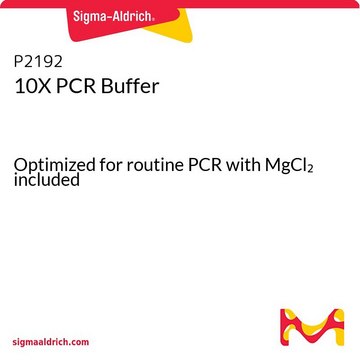MAK150
Fluorometric Intracellular pH Assay Kit
sufficient for 1000 fluorometric tests
About This Item
Recommended Products
usage
sufficient for 1000 fluorometric tests
detection method
fluorometric
relevant disease(s)
neurological disorders; genitourinary disorders; cancer
storage temp.
−20°C
General description
This kit can be utilized to measure decreases in intracellular pH in cells treated under various conditions using a simple standard protocol. Alternatively, an Acid-Load procedure can be used to measure the increase of intracellular pH associated with changes in cellular metabolism due to GPCR activation, growth factor activity, or other cellular stimulation. With the Acid-Load procedure ammonium chloride solution is added after the fluorescent pH dye is loaded into cells in a minimum volume. This Acid-Loading step is followed by the addition of agonist in a relatively large volume (~4x) of buffer. The sudden volume change initiates an efflux of ammonia (NH3) from the cells causing a rapid decrease in intracellular pH, and thus a decrease in fluorescence signal. The effect of agonist on the subsequent recovery of intracellular pH is measured by the relative fluorescence signal increase.
Application
Features and Benefits
Suitability
Principle
Storage Class Code
10 - Combustible liquids
WGK
WGK 3
Flash Point(F)
Not applicable
Flash Point(C)
Not applicable
Regulatory Listings
Regulatory Listings are mainly provided for chemical products. Only limited information can be provided here for non-chemical products. No entry means none of the components are listed. It is the user’s obligation to ensure the safe and legal use of the product.
PDSCL
Please refer to KIT Component information
PRTR
Please refer to KIT Component information
FSL
Please refer to KIT Component information
ISHL Indicated Name
Please refer to KIT Component information
ISHL Notified Names
Please refer to KIT Component information
Cartagena Act
Please refer to KIT Component information
JAN Code
キットコンポーネントの情報を参照してください
Certificates of Analysis (COA)
Search for Certificates of Analysis (COA) by entering the products Lot/Batch Number. Lot and Batch Numbers can be found on a product’s label following the words ‘Lot’ or ‘Batch’.
Already Own This Product?
Find documentation for the products that you have recently purchased in the Document Library.
Customers Also Viewed
Our team of scientists has experience in all areas of research including Life Science, Material Science, Chemical Synthesis, Chromatography, Analytical and many others.
Contact Technical Service









